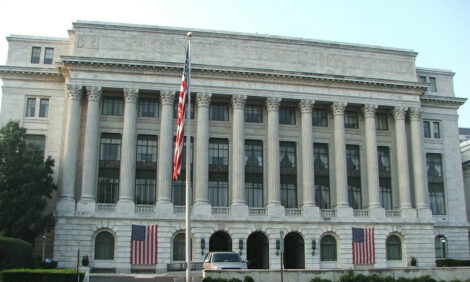



Climate Change and World Agriculture
US – Plenty of media reports have been devoted to the subject of global climate change, but farmers and ranchers may still be wondering what the change means for how they will grow the food supply in coming years.
“No sector of agriculture is going to escape the impact of climate change,” said Jerry Hatfield, who’s with the US Department of Agriculture’s Agricultural Research Service (USDA/ARS). He joined several other experts to speak about climate change at Kansas State University last week. The presentation was part of the 2008 K-State Research and Extension Annual Conference, held to update Extension agents on research in various disciplines.
Dr Hatfield, the lead scientist and director of the USDA/ARS National Soil Tilth Lab in Ames, Iowa, noted that in any given year, farmers and consumers see the impact of climate fluctuations on a crop in a particular area. It may be an early freeze that kills the citrus crop in Florida or a drought that cuts wheat output in Australia. Those are normal, regional fluctuations that affect supplies and prices.
In the case of global climate change, however, agriculture around the world is affected, Dr Hatfield said, noting that farmers as far north as Pierre, South Dakota are now planting corn and soybeans.
Dr Hatfield cited the example of livestock, which, like humans, have an optimum range of temperatures at which they are most comfortable. With cattle, for instance, if the air temperature is far enough above the animals’ comfort range, their appetite is reduced. In turn, their rate of weight gain is reduced. Milk production and conception rates can also be affected.
Likewise, when the temperature falls far enough below animals’ comfort level, more of the calories they ingest will go toward maintaining their health.
Climate change could mean capital investment in livestock facilities to reduce the potential for livestock stress, Dr Hatfield said.
Crop production also will be affected, he said.
“This increasing impact of climate change will tax our ability to efficiently produce crops,” Dr Hatfield said. “Every plant species has a point at which it quits growing.”
For example, he said, corn has an optimal temperature range that tops out at 95 degrees F.
Up to that topping-out point, warmer temperatures cause faster plant development. But, faster plant development does not necessarily mean greater grain yields, the scientist added. The plants may grow, but the nutrients they provide may be diminished.
* "Climate change could mean capital investment in livestock facilities to reduce the potential for livestock stress" |
“Another one of the challenges will be managing soil to conserve water,” Dr Hatfield said.
In addition to the traditional row crops grown in Kansas, such cool-weather crops as broccoli will be affected.
Global climate change will have an impact on weed and insect populations and will prompt changes in planting dates, he said.
Dr Hatfield acknowledged that corn yields have generally been increasing in recent years. He said he believes, however, that they will start leveling off within five to 10 years because of the growth-affecting impacts of increasing temperatures and the related variability in precipitation.








